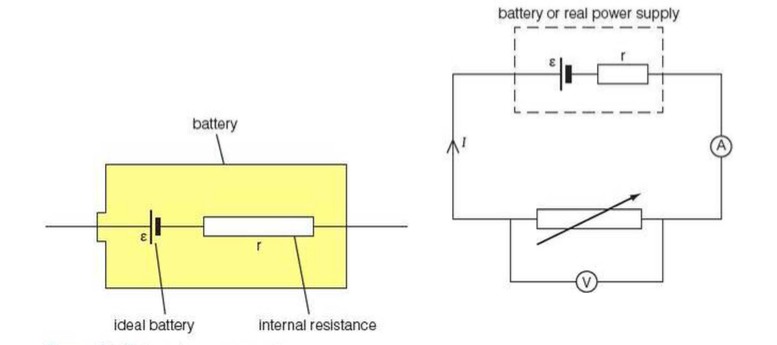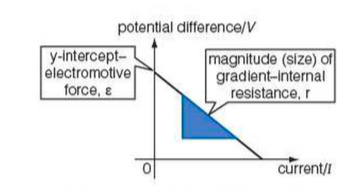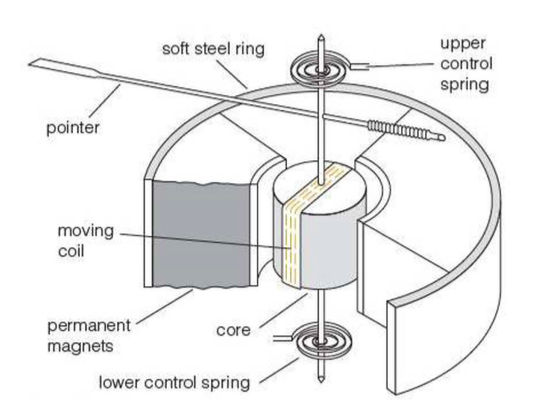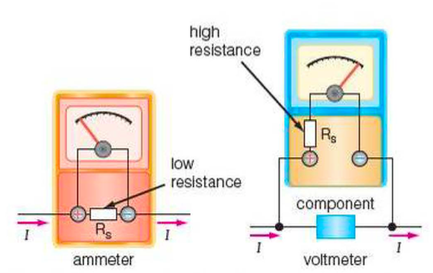Internal Resistance and Electromotive Force
Summary
⇒ Real power supplies, such as batteries and laboratory power packs, always have an internal resistance, r
- As the current flows through the power supply, the internal resistance creates a potential difference that leads to electrical energy being transferred to thermal energy inside the power supply
- This is one of the reasons why hand-held devices such as tablets warm up when they are in use for a long period of time
⇒ The internal resistance of most batteries and power supplies is very low: a typical AA battery has an internal resistance of about 0.2Ω and, as such, can effectively be ignored when measuring the electrical properties of most circuits
⇒ The internal resistance of a power supply cannot be measured directly as it is 'inside' the power supply
- The only way to measure it is to use its electrical characteristic
- A circuit that can be used to do this is shown below...

⇒ Circuit calculations can be used to determine the internal resistance and the electrical characteristic
⇒ NOTE: unless a question explicitly states that the power supply in the question has an internal resistance, you should ignore it
Electromotive Force
⇒ The electromotive force, ε, must be the same as the sum of the potential differences in the circuit (Kirchoff's Second Circuit Law)
⇒ There are two potential differences in the circuit above: one is across the external variable resistor, V, and the other is the potential difference across the internal resistor
⇒ This cannot be measured directly, but the potential difference is across the internal resistor is equal to Ir
- This means that the electromotive force is V (the pd acorss the variable resistor) + Ir (the pd across the internal resistor): ε = V + Ir
⇒ The current, I, can be measured directly using an ammeter; ε and r are both constants, so the equation can be rewritten as: V = ε - Ir or V = -rI + ε
- This is the eqution of a straight line in the form y = mx + c, where the gradient is negative
- If an electrical characteristic is drawn using values of V and I from various values of R (the external load resistance) then the y-intercept of the graph is the electromotive force, ε, and the gradient is negative and equal to -r, the internal resistance

Voltmeters and Ammeters
⇒ Ammeters are always put into circuits in series with other components
- This is because they measure the flow of the charge (the electons) through the circuit
- Older, analogue ammeters involve passing the current through a coil of wire sitting inside a shaped permanent magnet

⇒ The current in the coil generates a magnetic field that interacts with a permanent magnetic field, causing the coil to turn; the curent is then measured by a pointer on an analogue scale
- Modern, digital ammeters use an integrated circuit within the meter to measure the current, which is then displayed on a numerical display
⇒ Both designs, however, will always affect the size of the current in some way, as any device put into the circuit in series will have a resistance
- The extra resistance of the ammeter will therefore reduce the current in the circuit
- This effect cannot be overcome, so modern ammeters are designed to have very low resistance and are calibrated to take into account the reduction of the current due to the resistance of the meter
⇒ Voltmeters are always connected into circuits in parallel with components
- Both analogue and digital voltmeters work in very similar ways to ammeters, but a small curent is drawn from the circuit through a set, known, very high-resistancre resistor so that the current is proportional to the potential difference
- High quality voltmeters therefore have very high resistance

⇒ In other words, a voltmeter measures the voltage difference between two different points (say, on different sides of a resistor), but it should not change the amount of current going through the element between those two points. So, it should have very high resistance so that it doesn't "draw" current through it.
Extra
⇒ Also see our notes on: